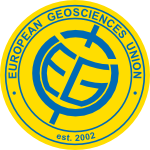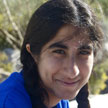
Rehemat Bhatia
was great fun being a geoscientist during this event - good luck to the rest of the geoscientists taking part :)
Favourite Thing: Any kind of labwork! So far I’ve got to shoot X rays at powdered igneous rocks called basalts (X Ray Fluorescence), drilled holes in microfossils using a laser (Laser Ablation Inductively Coupled Mass Spectrometry), measured ions that have been deflected through a magnetic field from specially treated powdered rock samples to work out specific isotopic ratios (Thermal Ionisation Mass Spectrometry) and used a microscope that fires electrons at materials coated in gold to see what they look like in more detail (Scanning Electron Microscopy)! Picking microfossils (literally just using a paintbrush and water!) is a big part of what I do, and getting to look at a sample for the first time is really exciting too :-) especially since most of the time no one has ever looked at the samples before so I’m the first person to do so! One of the awesome things about doing a geology degree is being able to go on fieldwork. Pretty much everywhere all over the globe has a story to tell, whether its within a mountain range or at the bottom of the ocean or even in the air! So far I’ve got to go to Iceland, Tenerife, Scotland, Wales, Spain and various parts of England.
My CV
Education:
Croydon High School (1998-2007) Newstead Wood School for Girls (2007-2009), Royal Holloway University of London (2009-2013), University College London (2013-present)
Qualifications:
Geoscience MSci degree
Country I live in:
United Kingdom
Work History:
Many places! Ranging from a Marine Micropalaeontology department at the University of Kiel, Germany to a geological company in North Wales. I also currently volunteer at the Natural History Museum in London with a scheme called V Factor!
Current Job:
I am studying for a PhD and am a ‘V Factor Volunteer Leader’ at the Natural History Museum in London
Employer:
University College London and the Natural History Museum
My Interview
Other stuff
Work photos:
[myimage1#] This is the lab I do all my microscope work in
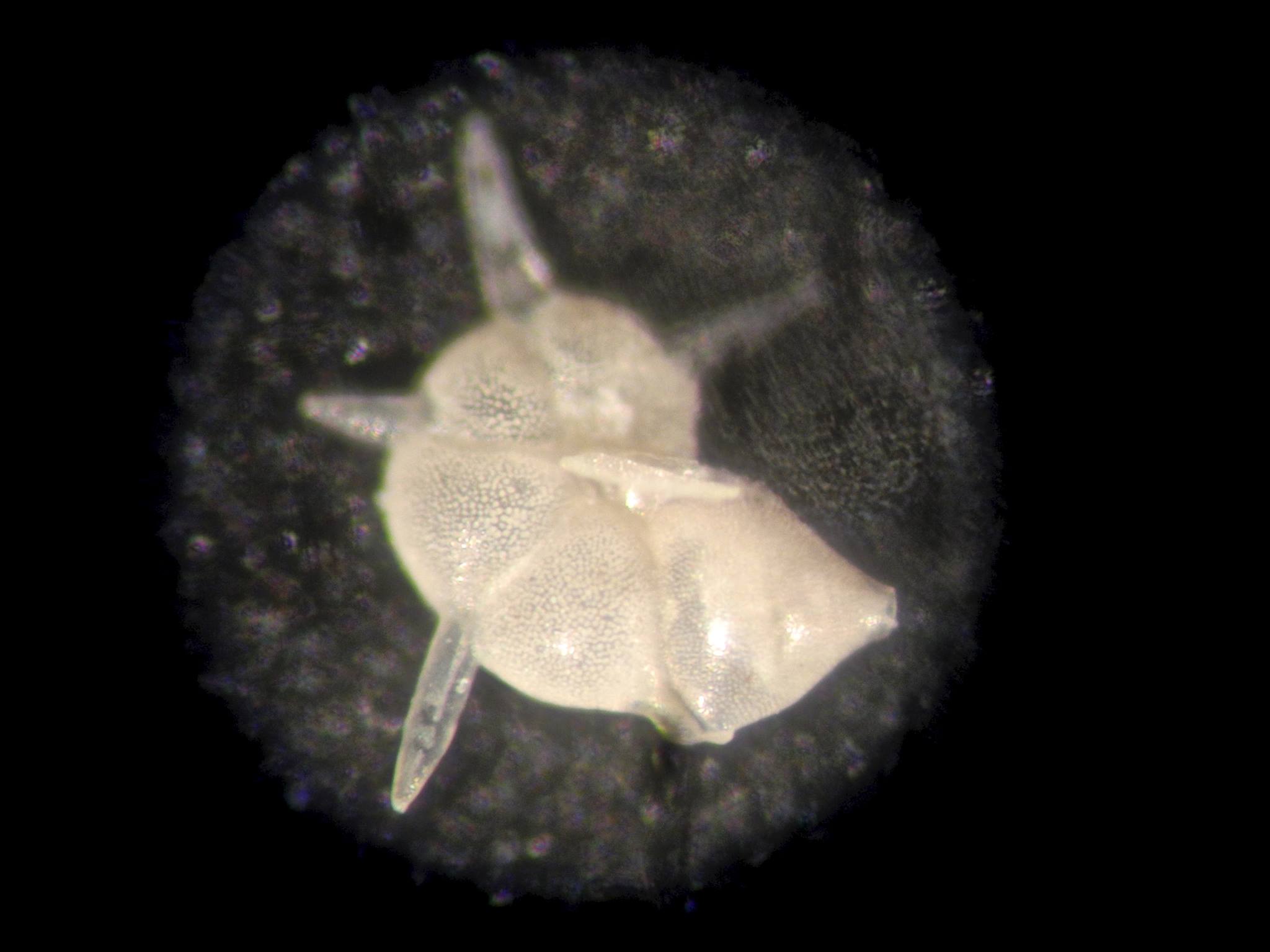 One of the foraminifera species (known as a Hantkenina!) in my sample. Its roughly 38 million years old and from a time period called the Eocene. They’re one of my favourite foraminifera species as they are spiky!! They’re about 100 micrometres in diameter (0.1 mm)
One of the foraminifera species (known as a Hantkenina!) in my sample. Its roughly 38 million years old and from a time period called the Eocene. They’re one of my favourite foraminifera species as they are spiky!! They’re about 100 micrometres in diameter (0.1 mm)
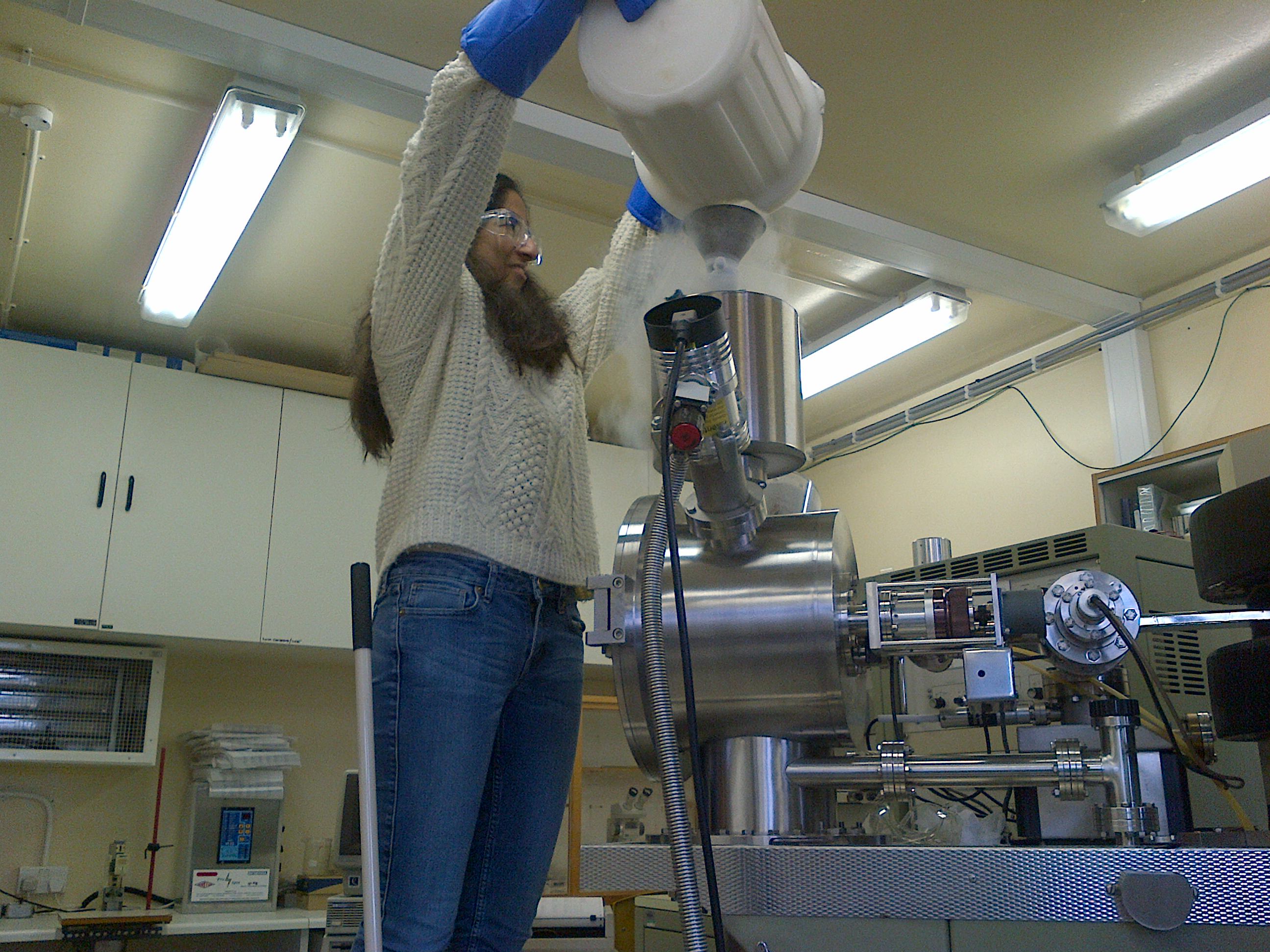 Pouring liquid nitrogen into the Thermal Ionisation Mass Spectrometer! The liquid nitrogen keeps the mass spectrometer cool so it doesn’t overheat
Pouring liquid nitrogen into the Thermal Ionisation Mass Spectrometer! The liquid nitrogen keeps the mass spectrometer cool so it doesn’t overheat
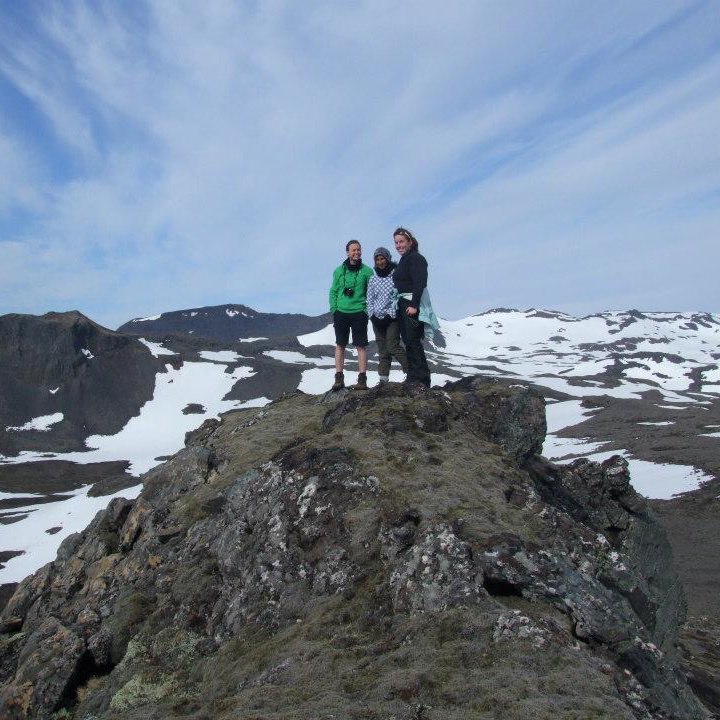 A few years ago I went to Iceland for an igneous geochemistry field trip – this photo of my friends (Steph and Ros) and I was taken at Stafnafell on the Snaefellsness peninsula in Western Iceland
A few years ago I went to Iceland for an igneous geochemistry field trip – this photo of my friends (Steph and Ros) and I was taken at Stafnafell on the Snaefellsness peninsula in Western Iceland
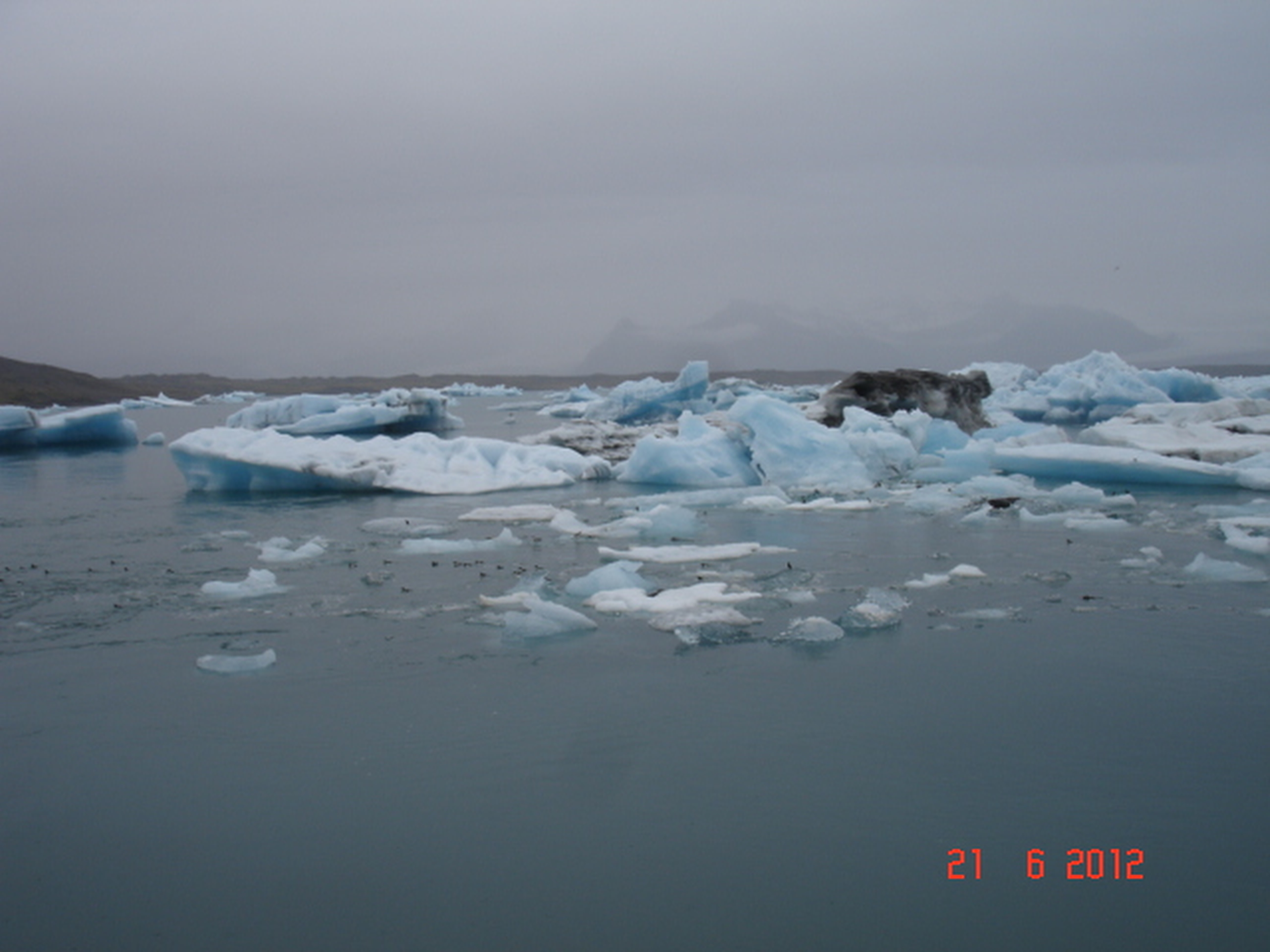 Another photo from Iceland! We visited the Jökulsárlon floating icebergs in Southeastern Iceland too, and the day we visited there were LOADS of puffins!
Another photo from Iceland! We visited the Jökulsárlon floating icebergs in Southeastern Iceland too, and the day we visited there were LOADS of puffins!
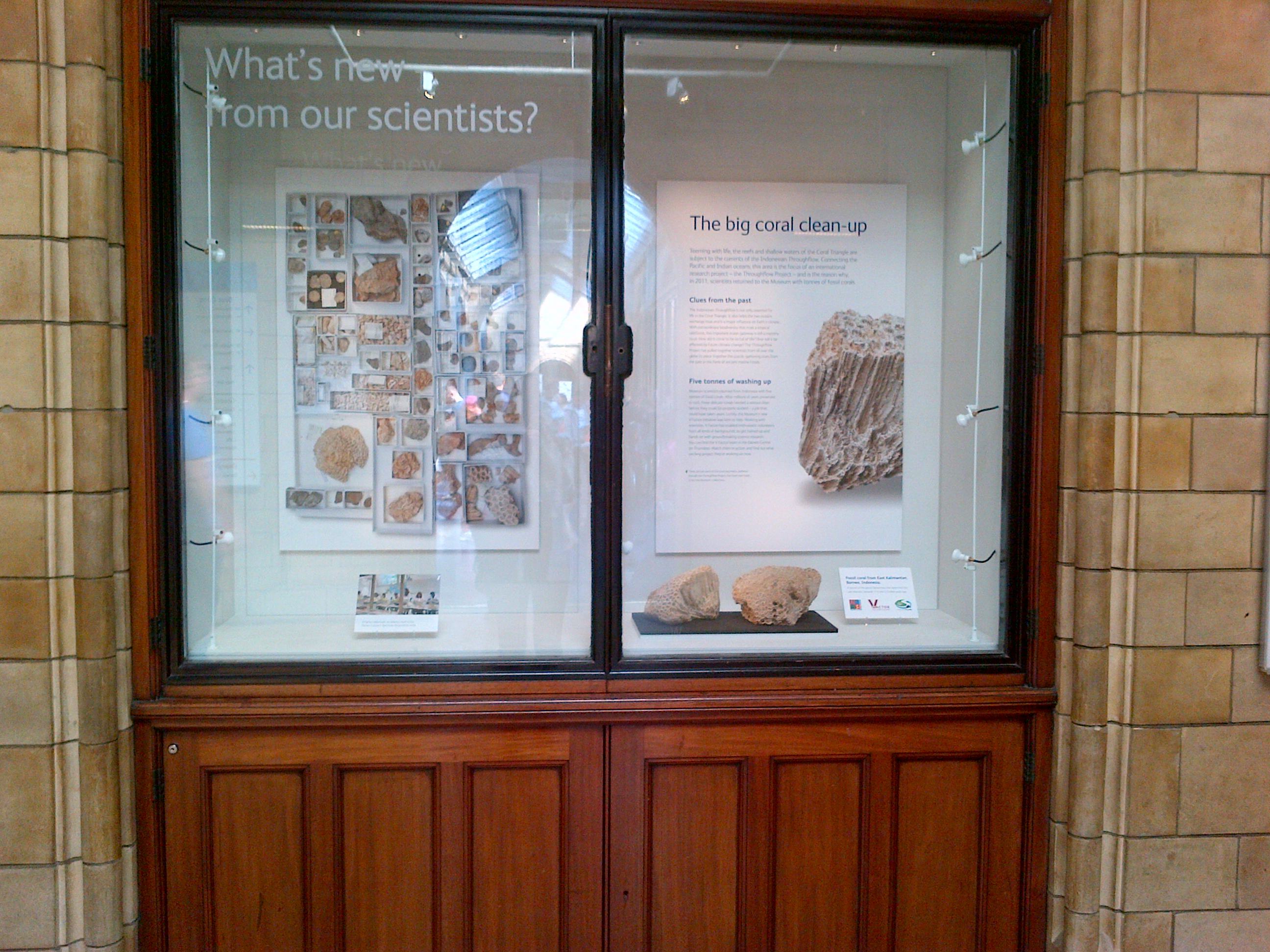 The scheme I volunteer with at the Natural History Museum works with researchers and curators from different departments. The very first collaboration was with a research project called ‘Throughflow’. The researchers in this project went on a field trip to East Kalimantan on the island of Borneo, and collected many fossil samples including corals, giant clams, coralline algae, larger benthic foraminifera and bryozoans. Our part as volunteers was to process and wash the fossil coral specimens collected on the field trip. Throughflow’s work and the scheme I volunteer with was showcased for about 3-4 months in a cabinet in the museum – here’s a photo of it!
The scheme I volunteer with at the Natural History Museum works with researchers and curators from different departments. The very first collaboration was with a research project called ‘Throughflow’. The researchers in this project went on a field trip to East Kalimantan on the island of Borneo, and collected many fossil samples including corals, giant clams, coralline algae, larger benthic foraminifera and bryozoans. Our part as volunteers was to process and wash the fossil coral specimens collected on the field trip. Throughflow’s work and the scheme I volunteer with was showcased for about 3-4 months in a cabinet in the museum – here’s a photo of it!
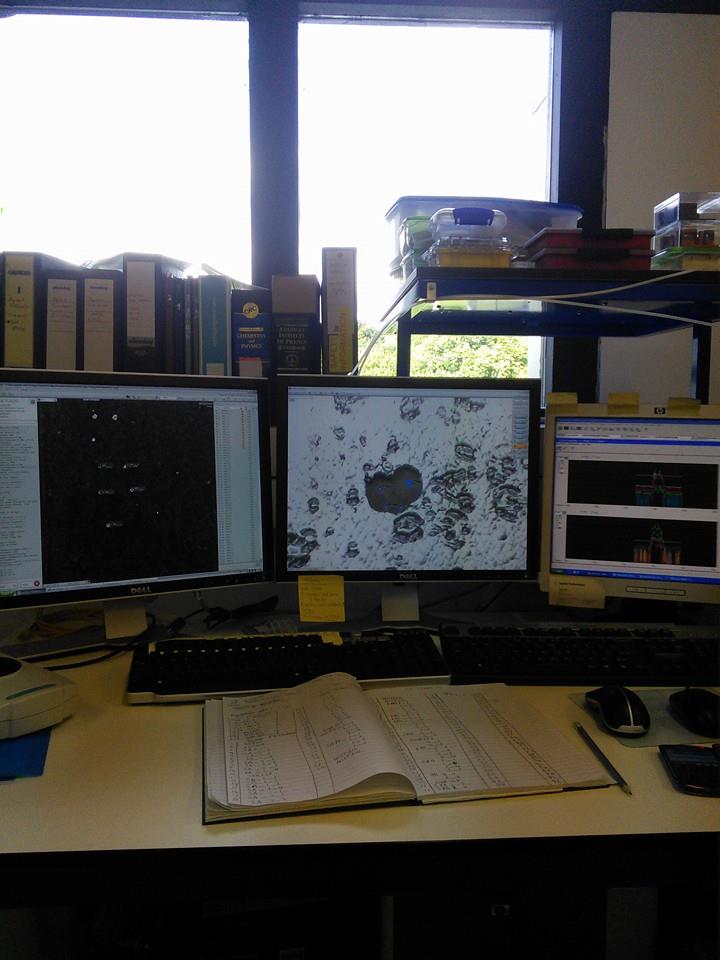 I did some laser ablation analysis on my forams during May. This picture shows the foram (its scientific name is Pseudohastigerina wilcoxensis) on double sided tape – at this point there was a 30 second delay before the laser started to zap it which is why there isn’t a bright spot on it. Just to clarify, this isn’t technically ‘my lab’ – I was at another university doing my analysis as my university doesn’t have a machine with the right specifications.
I did some laser ablation analysis on my forams during May. This picture shows the foram (its scientific name is Pseudohastigerina wilcoxensis) on double sided tape – at this point there was a 30 second delay before the laser started to zap it which is why there isn’t a bright spot on it. Just to clarify, this isn’t technically ‘my lab’ – I was at another university doing my analysis as my university doesn’t have a machine with the right specifications.
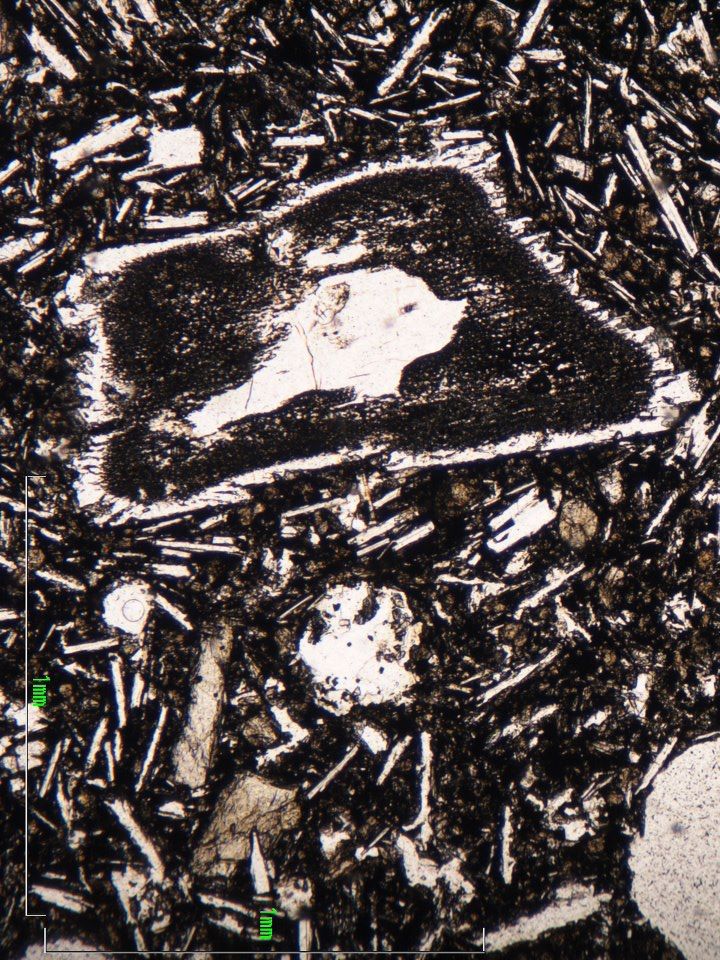 This isn’t what I look at anymore (I used to during my undergraduate degree) but I still find it really cool! This mineral is called plagioclase and it can be found in many igneous rocks including basalts from which this plagioclase crystal was found in. The texture that you can see is called a disequilibrium texture. This basically means that the black and white parts of the mineral have different chemistries. The disequilibrium texture in my plagioclase crystal just happened to look like a whale. HOW AWESOME IS THAT!
This isn’t what I look at anymore (I used to during my undergraduate degree) but I still find it really cool! This mineral is called plagioclase and it can be found in many igneous rocks including basalts from which this plagioclase crystal was found in. The texture that you can see is called a disequilibrium texture. This basically means that the black and white parts of the mineral have different chemistries. The disequilibrium texture in my plagioclase crystal just happened to look like a whale. HOW AWESOME IS THAT!
 This is me on the summer school field trip at the Contessa Highway Section near a town in Italy called Gubbio. It is a famous location as it is the first place where the Iridium spike was found at the Cretaceous Tertiary boundary (when the dinosaurs went extinct!)
This is me on the summer school field trip at the Contessa Highway Section near a town in Italy called Gubbio. It is a famous location as it is the first place where the Iridium spike was found at the Cretaceous Tertiary boundary (when the dinosaurs went extinct!)
My profile link:
/earthj14-zone/profile/rehematbhatia/



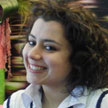
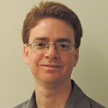


 Print this profile
Print this profile